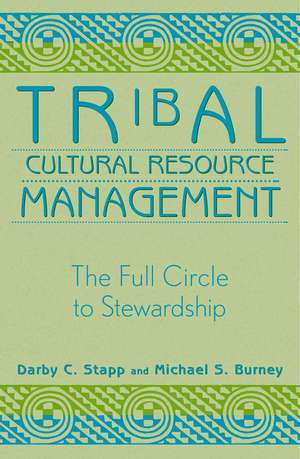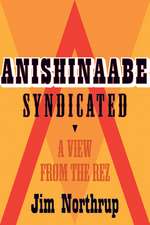Tribal Cultural Resource Management: Heritage Resource Management Series
Autor Darby C. Stapp, Michael S. Burneyen Limba Engleză Paperback – 15 oct 2002
Preț: 407.23 lei
Nou
Puncte Express: 611
Preț estimativ în valută:
77.92€ • 81.56$ • 64.86£
77.92€ • 81.56$ • 64.86£
Carte tipărită la comandă
Livrare economică 31 martie-14 aprilie
Preluare comenzi: 021 569.72.76
Specificații
ISBN-13: 9780759101050
ISBN-10: 0759101051
Pagini: 208
Dimensiuni: 149 x 229 x 17 mm
Greutate: 0.43 kg
Editura: Rowman & Littlefield
Seria Heritage Resource Management Series
ISBN-10: 0759101051
Pagini: 208
Dimensiuni: 149 x 229 x 17 mm
Greutate: 0.43 kg
Editura: Rowman & Littlefield
Seria Heritage Resource Management Series
Notă biografică
Cuprins
Part 1 Foreword by Jeff Van Pelt Part 2 Preface Part 3 Part One: Tracing the Roots of Tribal Cultural Resource Management Chapter 4 Chapter 1: Defining Tribal Cultural Resource Management Chapter 5 Chapter 2: The Early Years: Archaeology and American Indians - 1492 to 1960 Chapter 6 Chapter 3: Archaeology, Anthropology and American Indians - 1960 to 1980 Chapter 7 Chapter 4: Archaeology, Anthropology and American Indians - the 1980s and 1990s Chapter 8 Chapter 5: Case Study: The Cultural Resource Protection Program of the Confederated Tribes of the Umatilla Indian Reservation Part 9 Part Two: Implementing a Tribal Cultural Resource Management Agenda Chapter 10 Chapter 6: Developing a Tribal Cultural Resource Protection Program Chapter 11 Chapter 7: Consultation: The Cornerstone of Tribal Cultural Resource Management Chapter 12 Chapter 8: Cultural Landscapes and the Challenge of Protection Chapter 13 Chapter 9: Promoting a Cultural Resource Stewardship Agenda to Address Tribal Interests and Expectations Part 14 Part Three: The Future of Cultural Resource Management Chapter 15 Chapter 10: The Fruits of Synergy Part 16 Afterword by Robert Whitlam
Descriere
The entrance of Native Americans into the world of cultural resource management is forcing a change in the traditional paradigms that have guided archaeologists, anthropologists, and other CRM professionals. This book examines these developments from tribal perspectives and articulates native views on the identification of cultural resource.



















